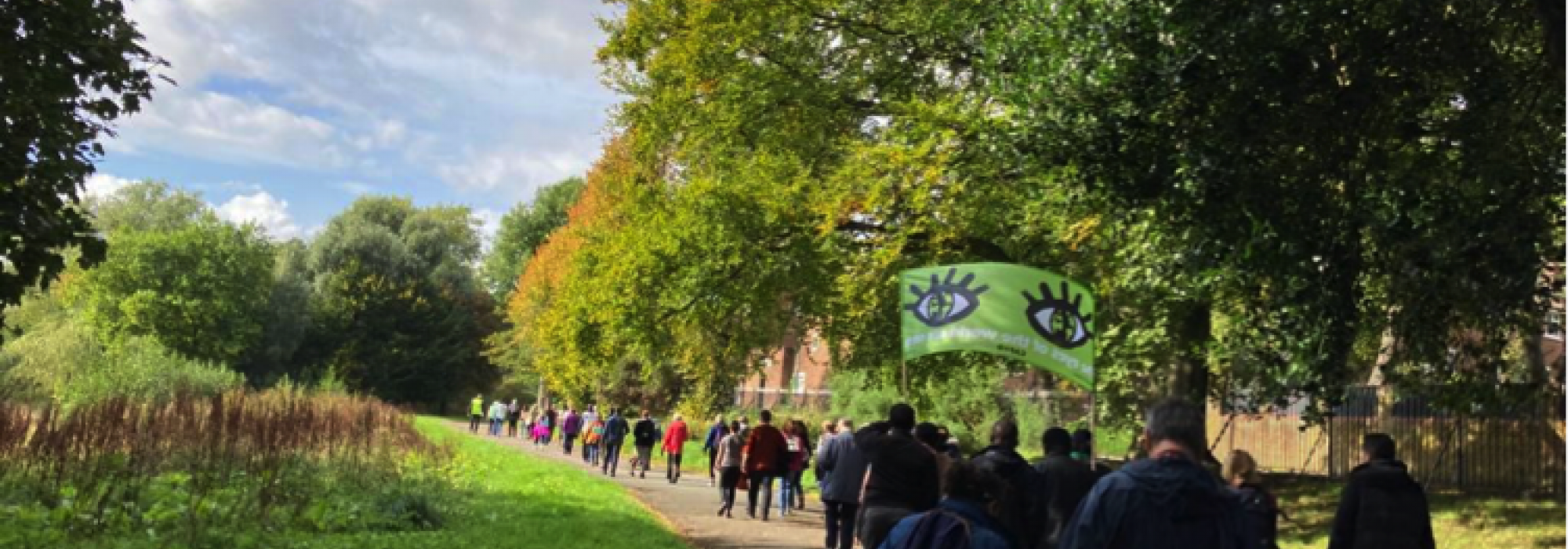
Net-Zero and the Catholic Church: ‘Guardians of Creation’ project releases guidance
Key Details
Guidance has been released today for the Catholic Church in England and Wales on accounting methods for net zero carbon. This “Guidance on Catholic Diocesan Carbon Accounting” presents a step-by-step guide specifically for a Catholic diocese, and is the second in a series of planned documents from the ‘Guardians of Creation’ project.
This new document presents a method to set a baseline carbon footprint, to measure progress, and provides guidance on setting ‘net-zero’ targets. Having already piloted this process, the Diocese of Salford is estimated to be responsible for the equivalent of fifteen hot air balloons of carbon dioxide a day through the operational use of its buildings alone [1], and is now working on a decarbonisation pathway.
Catholic dioceses contain churches, schools, religious orders and associated offices and properties which collectively have a large carbon footprint. By providing a method to calculate this footprint, a diocese will then be able to set out a plan to reduce it and to prioritise action.
Bishop John Arnold, lead Bishop on the Environment at the Catholic Bishops' Conference of England and Wales, said “it is encouraging that as COP26 gets underway we can show that we are taking the challenge of reducing our carbon footprint seriously with the release of this guidance. We know that the situation is urgent, and that we all have a responsibility to reduce the effects of climate change on the most vulnerable. I'm pleased that this is one of many initiatives being taken forward by the Catholic Church in this area, and I certainly feel like we are making some progress."
Over the past year the dioceses of Plymouth, Westminster and Birmingham have announced their carbon ambitions for 2030. Brentwood and Salford dioceses have both recently released guiding documents for their environmental efforts, and ‘The Journey to 2030,’ a project run by Catholic laity, has also launched a new website to help parish communities respond to the ecological crisis.
The ‘Guardians of Creation’ research project is being developed by the Diocese of Salford, in collaboration with St Mary’s University, Twickenham, and the Laudato Si’ Research Institute, Campion Hall, Oxford. Emma Gardner, Head of Environment for the Diocese of Salford and lead on the Guardians of Creation Project, said “over the last year we have been working closely with Inter Diocesan Fuel Management [2] and the Tyndall Centre at The University of Manchester [3] to understand what emissions a diocese should be reporting on, and by how much and how quickly we can reduce our carbon footprint. Having been through the process ourselves we hope this guidance will make the experience much more straightforward for other dioceses at this critical time. The Diocese of Salford is keen to work on our next steps, developing a decarbonisation plan for the Diocese of Salford.”
The methodology is intended to be applicable to any diocese but offers especially detailed guidance for dioceses in the UK. Roland Daw, Senior Lecturer in Strategy and Entrepreneurship at St Mary’s University and lead author on the report said “although one can see general strategic direction on decarbonisation coming from the top in the Catholic Church, the actual planning and implementation of decarbonisation is managed in the mid-range organisations of the Church – the dioceses. This means that if you want to help the Church decarbonise as a whole, you actually need to design an approach that works in all its parts. We’ve built some flexibility into this method, but there should also be enough commonality for the dioceses to talk to each other.”
On 4 October Pope Francis with nearly 40 other faith leaders presented Alok Sharma, President-Designate of COP26, with a joint appeal calling on the international community to raise their ambition ahead of COP26. “Future generations will never forgive us if we squander this precious opportunity. We have inherited a garden: we must not leave a desert to our children.” The appeal committed signatories to greater commitment themselves, including “supporting actions to reduce carbon emission” and making “bold plans to achieve full sustainability in our buildings, land, vehicles and other properties.”[4]
For media enquiries, please contact: decarbonisation@dioceseofsalford.org.uk
[1] This was calculated where a hot air balloon is taken to have a capacity of 4.5 tons of CO2. This calculation currently only considers buildings and not any kind of travel or embodied carbon.
[2] Inter Diocesan Fuel Management Ltd is a company established in 1994 by Catholic dioceses in England and Wales, enabling dioceses to bulk purchase their renewable energy and take advantage of the better buying power of a large organisation.
[3] The Tyndall Centre have been providing valuable input to the project on carbon budgeting and setting science based carbon targets.
[4] For the full statement please see https://press.vatican.va/content/salastampa/en/bollettino/pubblico/2021/10/04/211004a.html

